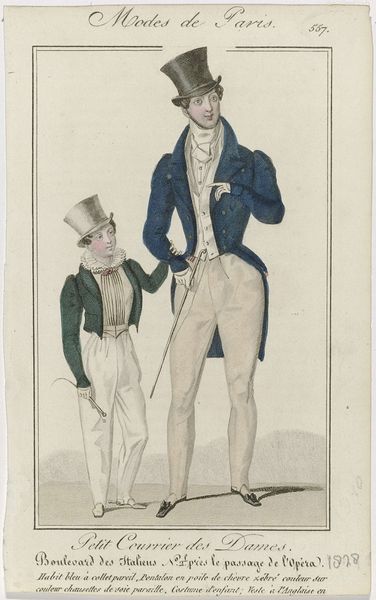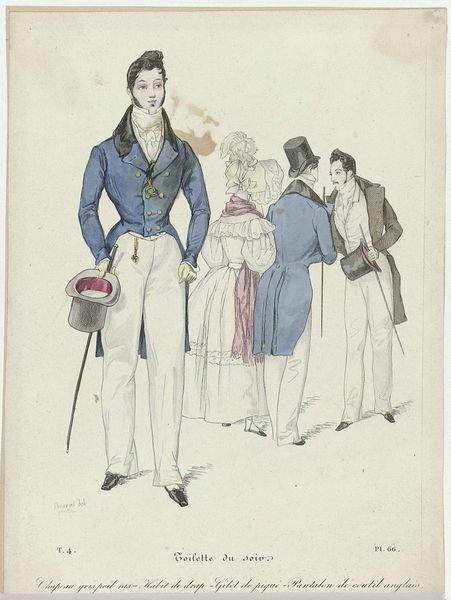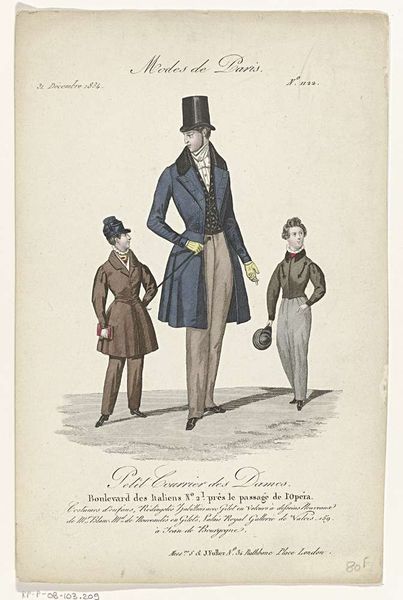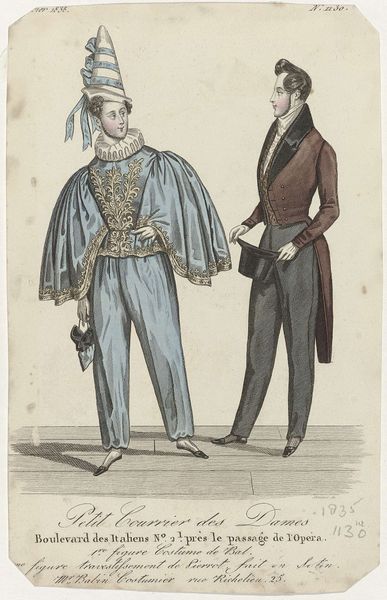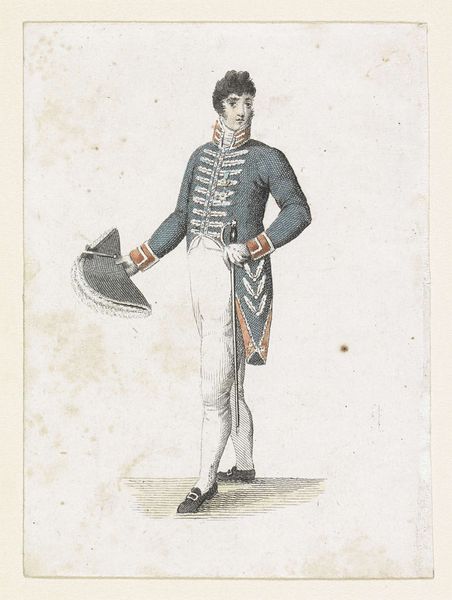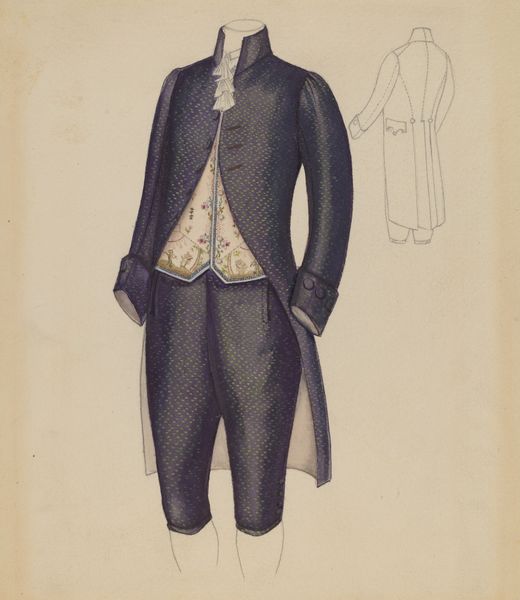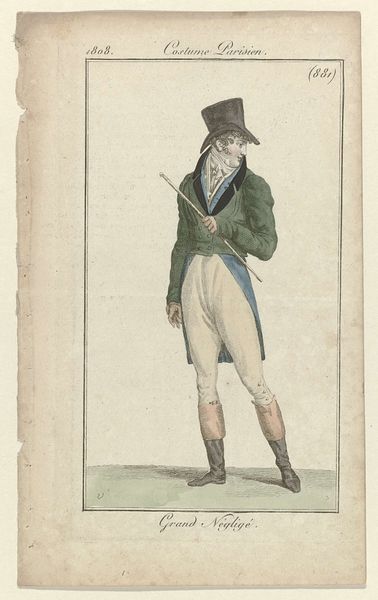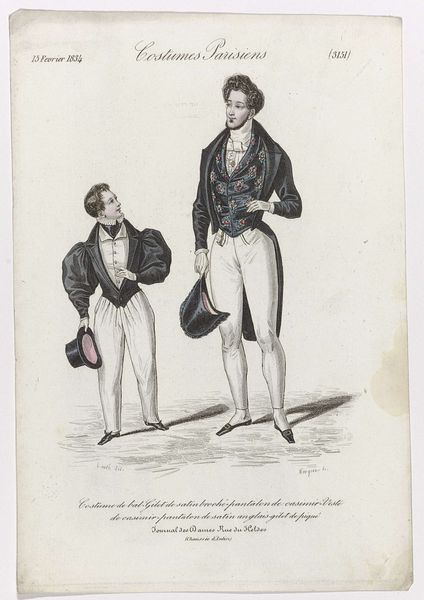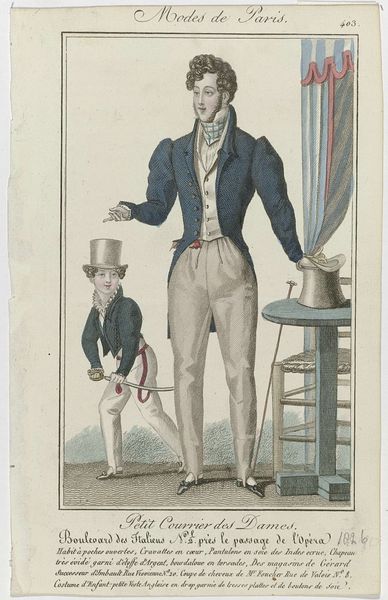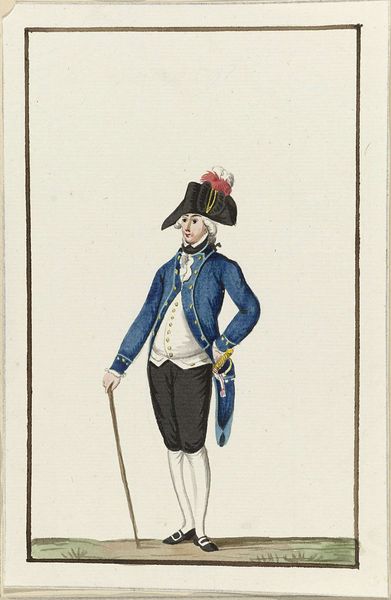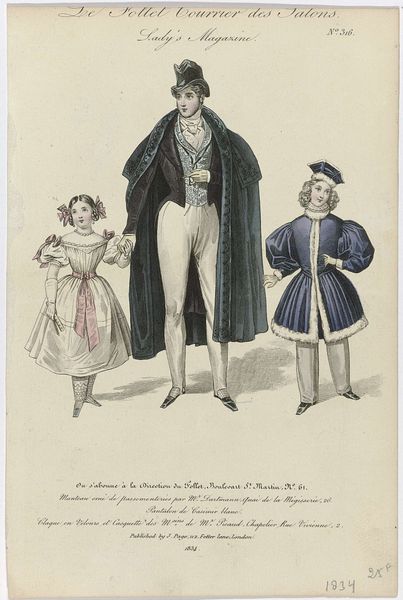
Petit Courrier des Dames, 30 septembre 1833, No. 1005 : Gilet satin à dessin (...) 1833
0:00
0:00
drawing, print
#
portrait
#
drawing
# print
#
romanticism
#
genre-painting
Dimensions: height 225 mm, width 147 mm
Copyright: Rijks Museum: Open Domain
Curator: Here we have an engraving entitled "Petit Courrier des Dames, 30 septembre 1833, No. 1005 : Gilet satin à dessin…", created in 1833 by an anonymous artist. It depicts two elegantly dressed men in what seems to be Parisian fashion. What strikes you about it? Editor: The composition is really interesting; there's such a focus on male attire, presenting it with an almost theatrical elegance, which reflects the cultural obsession with masculinity and presentation. The scale also appears exaggerated, which makes me question its relationship to societal expectations of gender. Curator: Precisely! Fashion plates such as this weren't merely about clothes; they were visual articulations of social standing and aspirations. Romanticism emphasized individual expression but within the strict confines of class. The gilet mentioned in the title, “satin à dessin,” indicates an opulent textile meant to convey refinement. Editor: I'm drawn to the waistcoat. The botanical motif is very strong, calling to mind symbols of nature, youth, and the pastoral idealized by Romanticism, while also alluding to aristocratic aesthetics, hunting parties, and leisure. But I find that there are rigid forms suggesting an attempt to constrain or dominate natural vitality. Curator: A fascinating read! That juxtaposition speaks to the era's complex relationship with progress and tradition. The artist has chosen to highlight minute details. Who does this style of dress allow to perform within social settings and what are their accepted freedoms within those constraints? Editor: Considering your point, notice how one man faces forward, almost as an exhibit, and the other is turned away. What narrative do you suspect that anonymity performs? Curator: It potentially embodies the conflicting desires to participate and yet resist the male gaze— a form of defiance. Though mass-produced fashion plates reinforced existing social structures, some could be reclaimed, adapted, or rejected to fit evolving identities. The choice not to feature the wearer indicates the rise of individual taste. Editor: This piece isn't simply documenting garments; it serves as a reminder that the choices we make carry the weight of inherited symbolism. There are endless meanings!
Comments
No comments
Be the first to comment and join the conversation on the ultimate creative platform.
